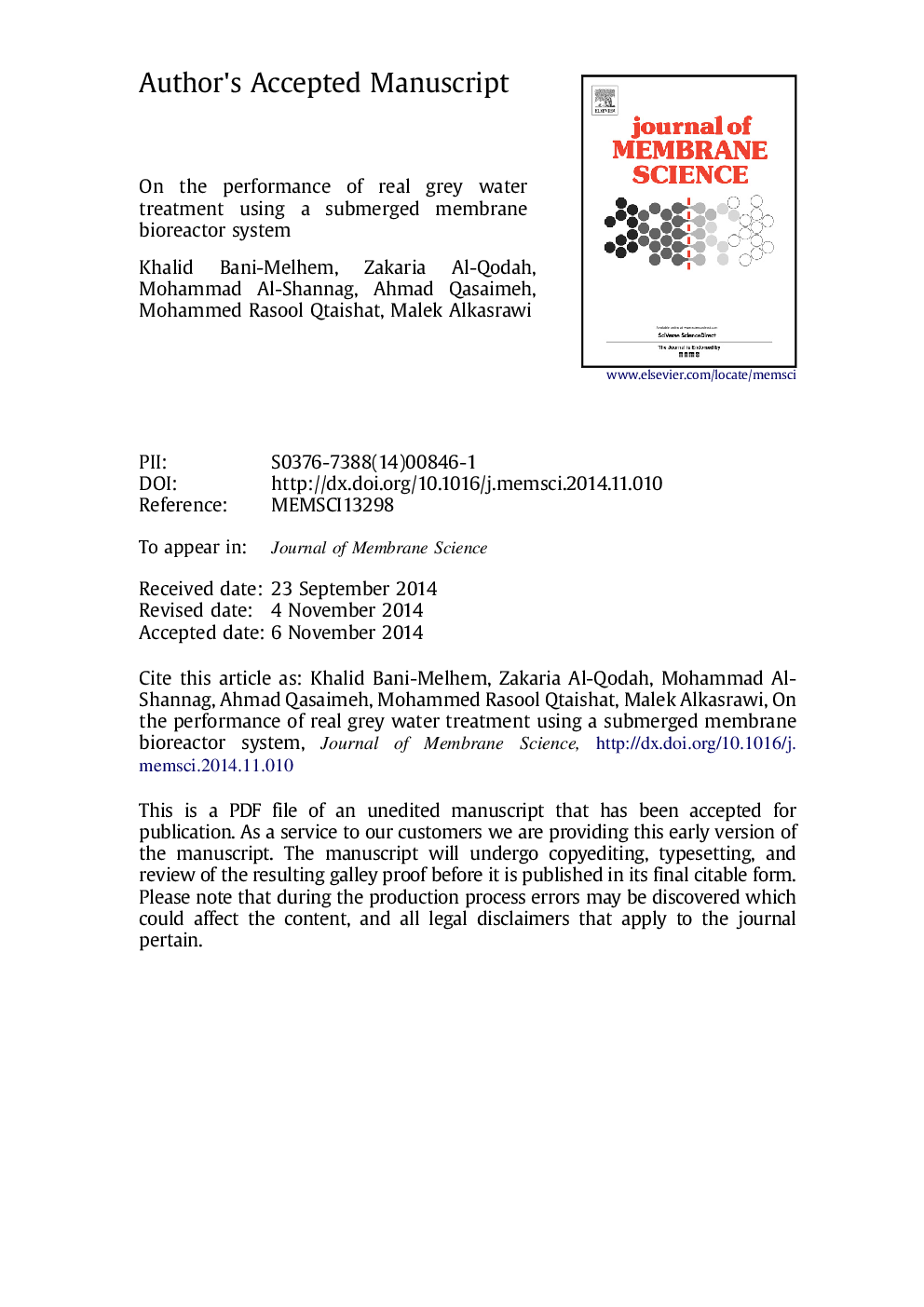| Article ID | Journal | Published Year | Pages | File Type |
|---|---|---|---|---|
| 7021547 | Journal of Membrane Science | 2015 | 45 Pages |
Abstract
The performance of a submerged membrane bioreactor (SMBR) system for grey water (GW) treatment was evaluated in terms of effluent quality and membrane fouling. The SMBR was operated for 42 days at constant transmembrane pressure (13Â kPa) in six consecutive stages. A hollow fibre ultrafiltration membrane module (ZW-1) was used to treat real GW with the aim of producing effluent that meets reuse guidelines for non-potable standards. A complete retention for activated sludge was maintained in the bioreactor to minimize the amount of sludge disposed into the environment. The results demonstrated that the SMBR system was able to reduce effectively the COD, NH3-N, turbidity, and colour to have values of 45Â mg/L, 0.26Â mg/L, 3Â FTU and 18 PtCo in the effluent, respectively. Furthermore, a complete removal of total suspended solids (TSS) was achieved and faecal coliform concentration was below the determination threshold. In terms of membrane permeability, the results showed that the cake layer contributed significantly (86%) in reducing the permeation flux. The time-dependent permeation flux was modelled adequately according to an exponential expression. Ultimately, the treated GW by SMBR system can be considered as a good source for the most stringent non-potable reuse standards in arid areas.
Keywords
Related Topics
Physical Sciences and Engineering
Chemical Engineering
Filtration and Separation
Authors
Khalid Bani-Melhem, Zakaria Al-Qodah, Mohammad Al-Shannag, Ahmad Qasaimeh, Mohammed Rasool Qtaishat, Malek Alkasrawi,
